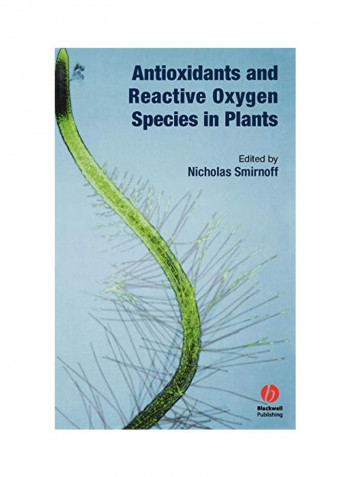Antioxidants Reactive Oxygen Specie Hardcover
Recommend
Sort by
Rating
Date
Specifications
Author 1
Smirnoff, Nicholas
Book Description
Reactive oxygen species (ROS) are produced during the interaction of metabolism with oxygen. As ROS have the potential to cause oxidative damage by reacting with biomolecules, research on ROS has concentrated on the oxidative damage that results from exposure to environmental stresses and on the role of ROS in defence against pathogens. However, more recently, it has become apparent that ROS also have important roles as signalling molecules. A complex network of enzymatic and small molecule antioxidants controls the concentration of ROS and repairs oxidative damage, and research is revealing the complex and subtle interplay between ROS and antioxidants in controlling plant growth, development and response to the environment. This book covers these new developments, generally focussing on molecular and biochemical details and providing a point of entry to the detailed literature. It is directed at researchers and professionals in plant molecular biology, biochemistry and cell biology, in both the academic and industrial sectors.
ISBN-10
1405125292
ISBN-13
9781405125291
Language
English
Publisher
John Wiley And Sons Ltd
Publication Date
02 Sep 2005
Number of Pages
320
Editor 1
Nicholas Smirnoff
Editorial Review
Antioxidants and Reactive Oxygen Species in Plants summarizes much recent research in to the role of reactive oxygen species (ROS) in plant metabolism, underling the important role of ROS as signalling molecules in plant growth and development and in plant responses to biotic and abiotic stress. It provides a solid background for research workers involved in this field of investigation and comprises eleven chapters written by twenty authors, all of whom are recognized scientists with notable achievements in research into antioxidants and oxygen stress. The great value of the book is that it reflects recent marked changes in our view of ROS. The book will be very useful not only for researchers directly involved in ROS and antioxidants investigations, but also to those who are entering the field, since each chapter has a brief introduction with definitions and an explanation of the problem. I can certainly recommend Antioxidants and Reactive Oxygen Species in Plants to graduate students with a background in plant molecular biology, biochemistry and environmental biology and who have an interest in the growing significance of ROS in so many aspects of plant life. Anna M. Rychter



